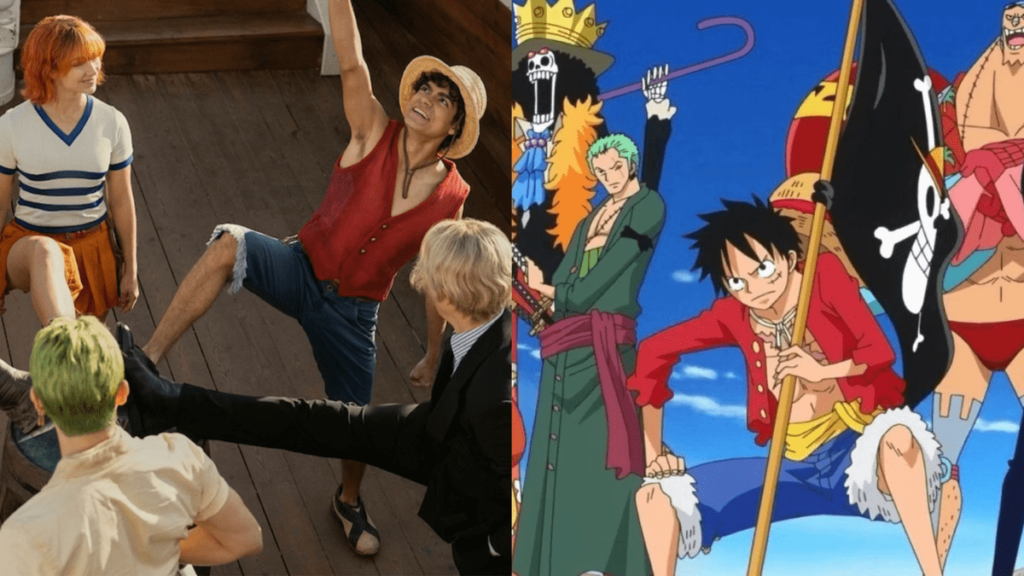At Jump Festa 2024, the anime community buzzed with excitement over the announcement of a major reboot: Wit Studio’s ‘The One Piece.’ This reboot, unprecedented for an ongoing series like ‘One Piece,’ carries immense expectations due to the franchise’s colossal stature.
With such anticipation, there’s a pressing need for ‘The One Piece’ to address the original series’ shortcomings. Despite its brilliance, ‘One Piece’ grapples with missed opportunities and inconsistencies, particularly in its early arcs, which the reboot will confront first. To truly excel, the live-action must undertake significant changes to enhance its storytelling and captivate both new and seasoned fans alike.
Also Read: ‘One Piece’ is Getting a Remake, Here’s What We Know
Better Pacing
‘One Piece” often faces criticism for its slow pacing, adapting only one manga chapter per episode and stretching scenes to fill time. Filler arcs further exacerbate this issue, making it one of the slowest-paced anime.
To succeed, ‘The One Piece’ must avoid these pacing problems. With no need for filler or padding, it has the opportunity to improve upon the original’s pacing and surpass it. Fixing the pacing is crucial for ‘The One Piece’ to excel, and hopefully, it will deliver on this and more.
Improve Animation
Critics have long pointed out that the anime struggles with its art and animation quality, a common issue for many long-running series. While improvements have been noticeable, especially from the Wano arc onwards, the inconsistency over the years still looms large.
The recent enhancements to the original series have significantly boosted its popularity, setting a high standard for ‘The One Piece’ to meet or surpass. With Wit Studio renowned for its animation prowess, there’s hope that ‘The One Piece’ will showcase its best work yet.
Nika Needs to be Present From the Start
Although Nika, the Sun God, is a recent addition to ‘One Piece,’ he has swiftly become a significant element of its lore. As the first genuine deity in the series, Nika’s power is revealed to be the true essence of Luffy’s Devil Fruit, known as the Human-Human Fruit, Model: Nika. Luffy, portrayed as a prophetic figure destined to save the world, inherits this power after Joy Boy.
Despite his importance, criticisms have arisen regarding the lack of build-up to Nika’s introduction, particularly about Gear 5. To enhance the narrative, it’s suggested that ‘The One Piece’ incorporates Nika’s concept early on, creating a more organic progression for later developments involving Luffy.
This approach could elevate the impact of Gear 5’s eventual debut, distinguishing the remake from its original counterpart.
Consistent Storyline
Devil Fruits are iconic, but their portrayal hasn’t always been consistent. Initially treated as mythical in the East Blue saga, later sagas reveal prominent characters as Devil Fruit users, making the earlier treatment seem strange. Sanji’s ignorance about Devil Fruits becomes even more perplexing, given his childhood desire for the Clear-Clear Fruit, a fact that becomes significant later.
This inconsistency begs for revision in ‘The One Piece’ narrative. Simply reframing how characters perceive Devil Fruits and aligning Sanji’s backstory could enhance the story’s coherence without altering its essence. Such a change is feasible and would improve the overall consistency of the narrative.
Proper Context
One pivotal moment in Luffy’s journey is when Shanks sacrifices his arm to save him from a Sea King. However, as the story progresses, this event seems increasingly inconsistent. As the series introduces the concept of Haki, and we learn Shanks had an extraordinary bounty, it’s puzzling how he could fall victim to a creature Luffy could handle.
To address this inconsistency, ‘The One Piece’ should clarify that Shanks was unable to use Haki to defend himself due to certain circumstances during the encounter. While Shanks losing his arm remains a significant part of the narrative, this adjustment would help maintain coherence in the story’s worldbuilding.
